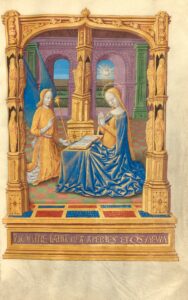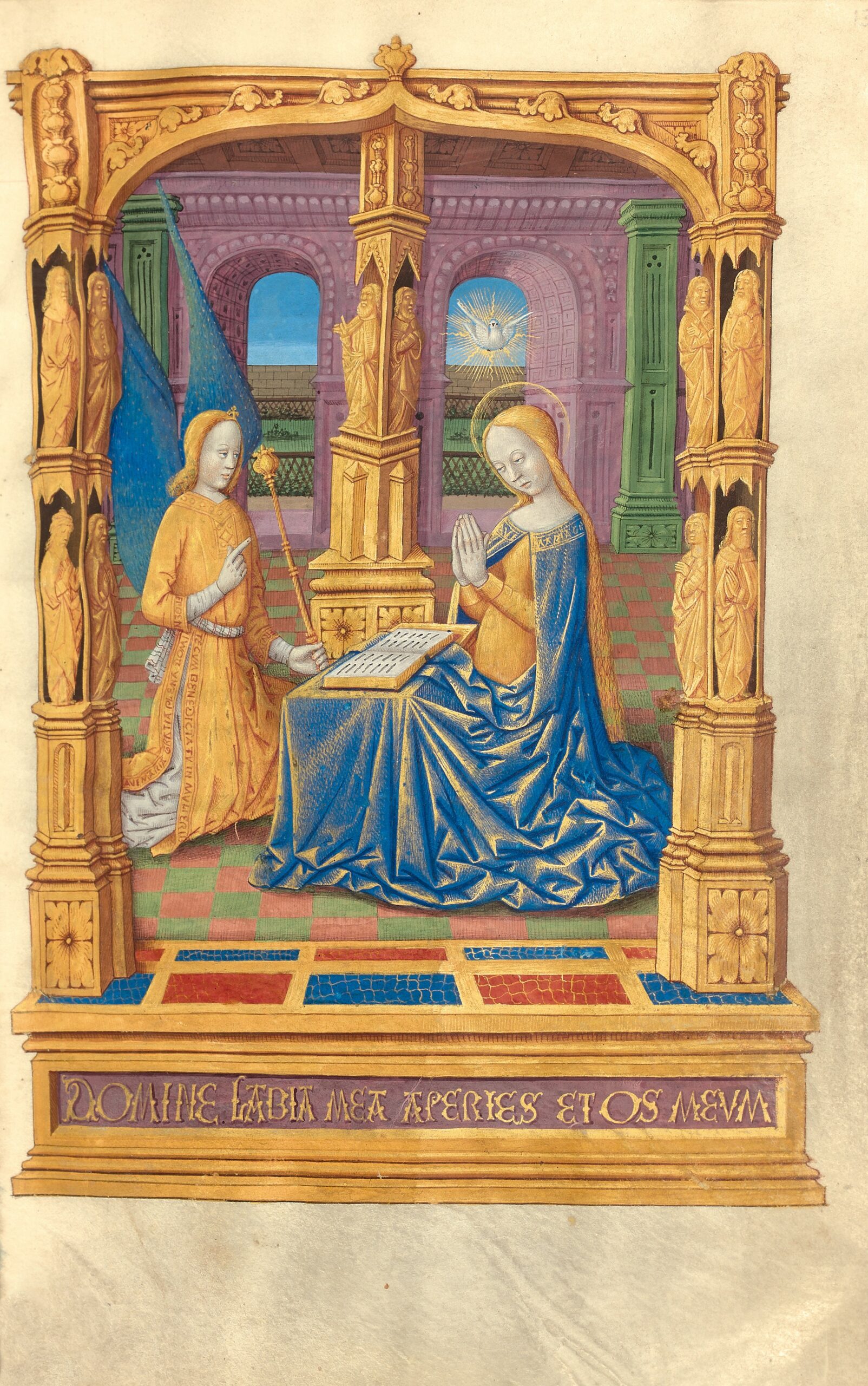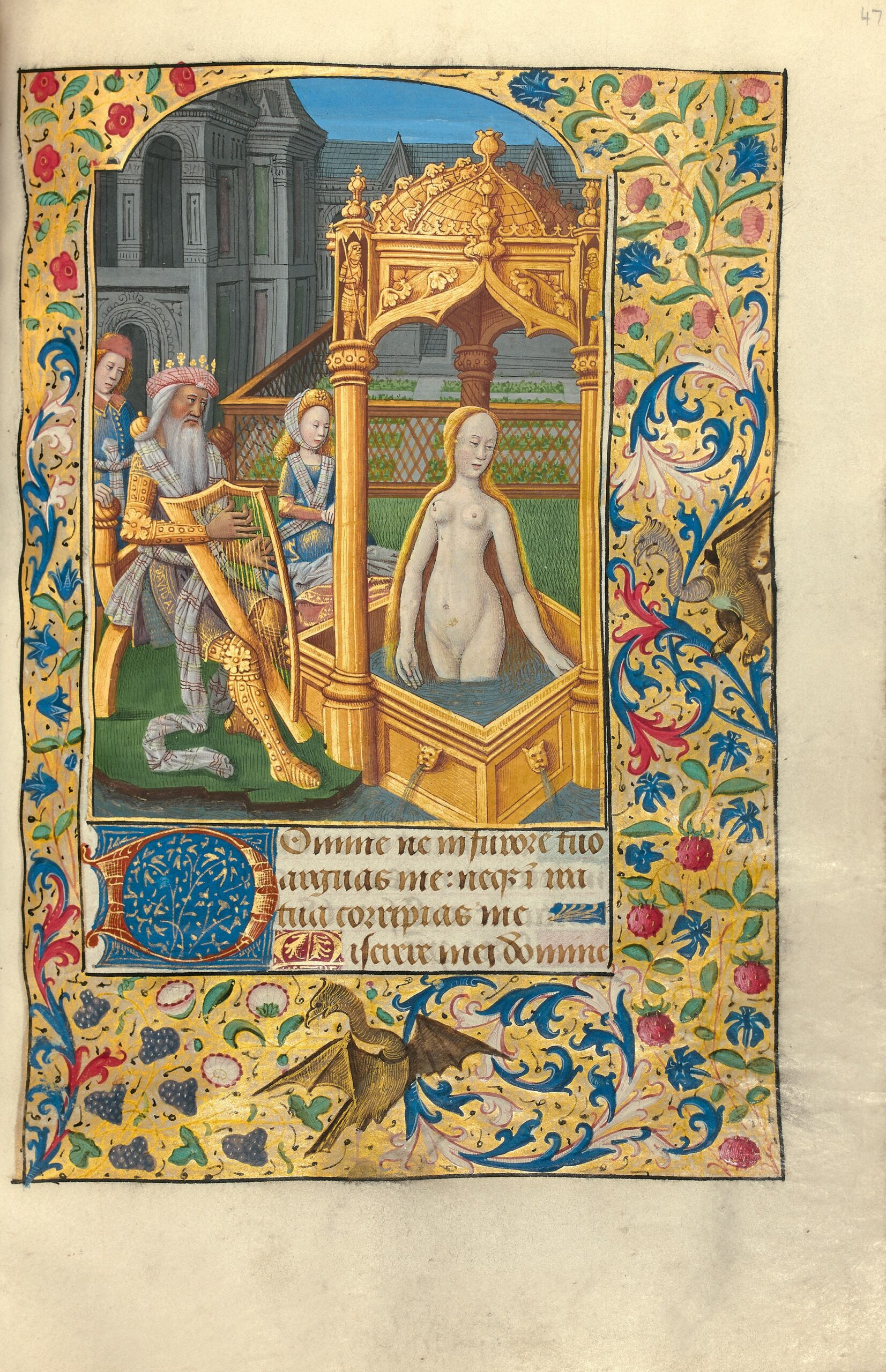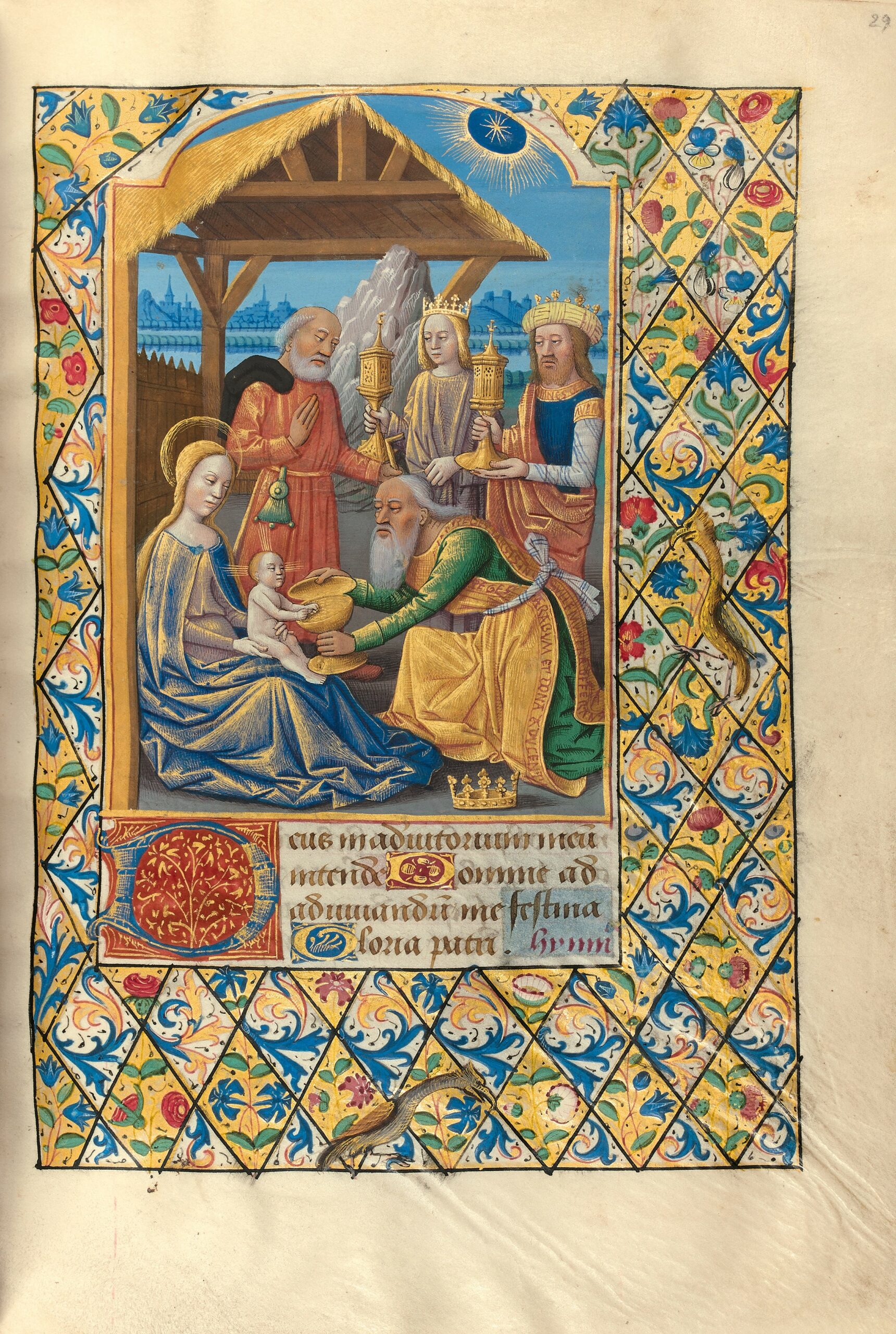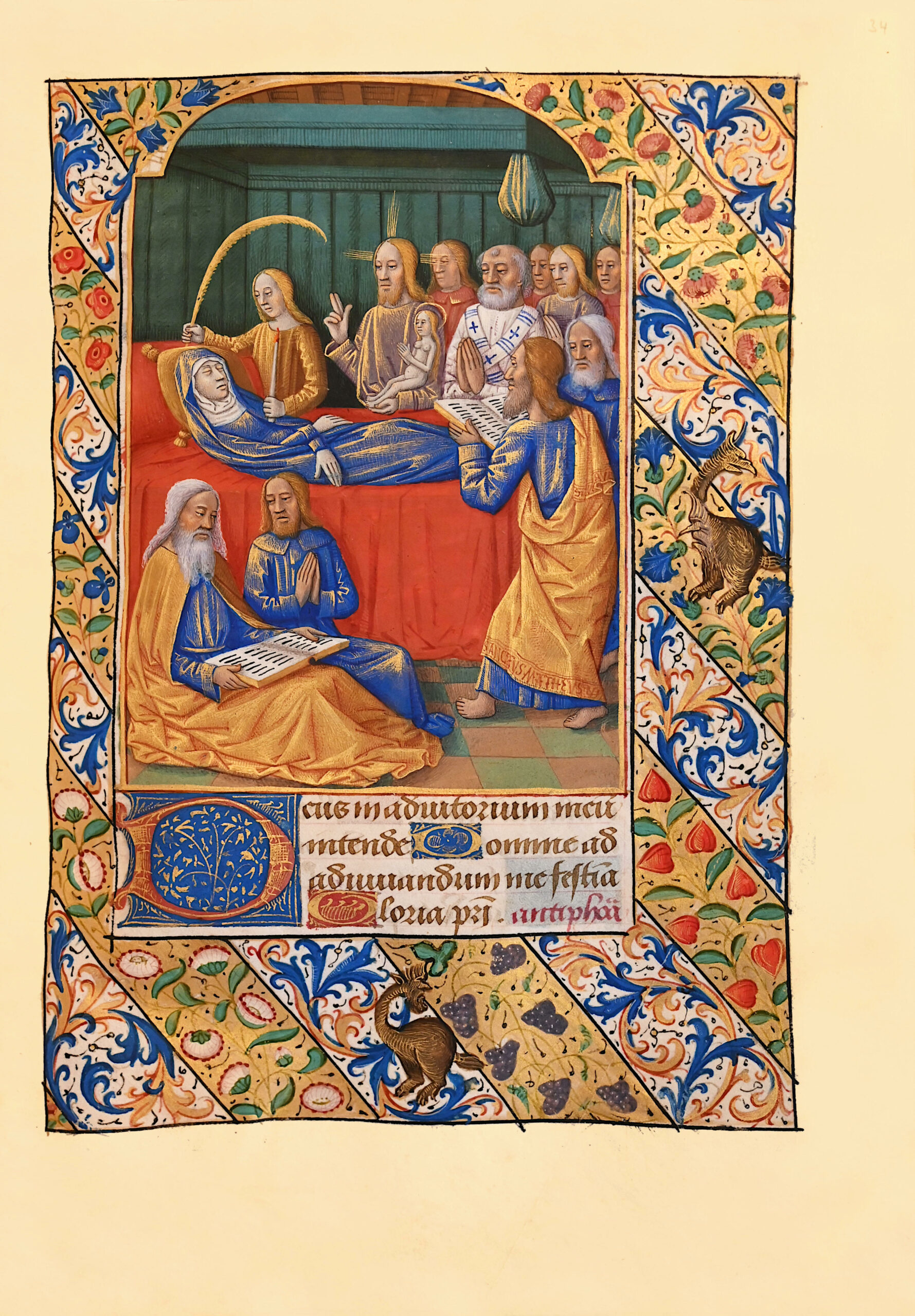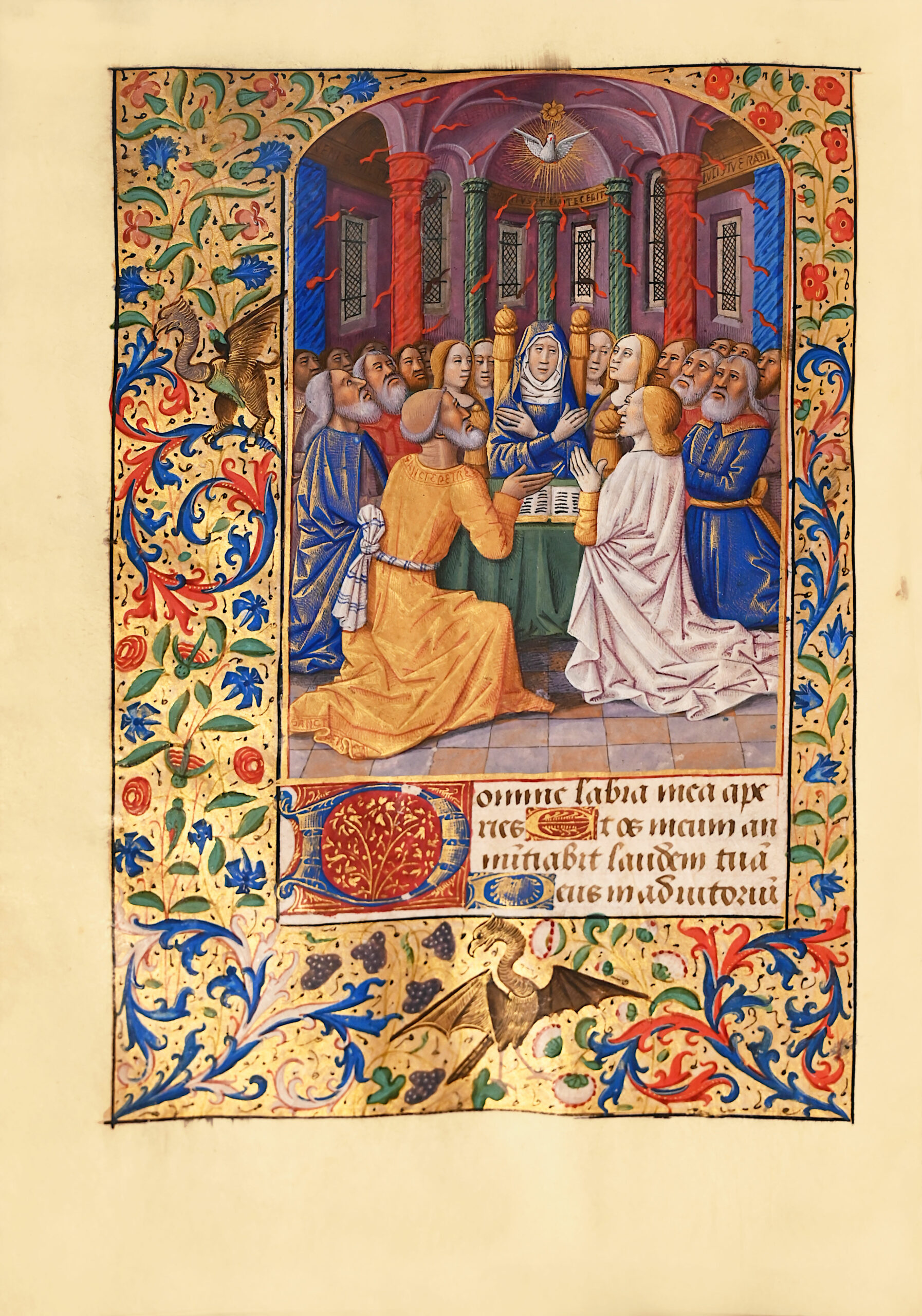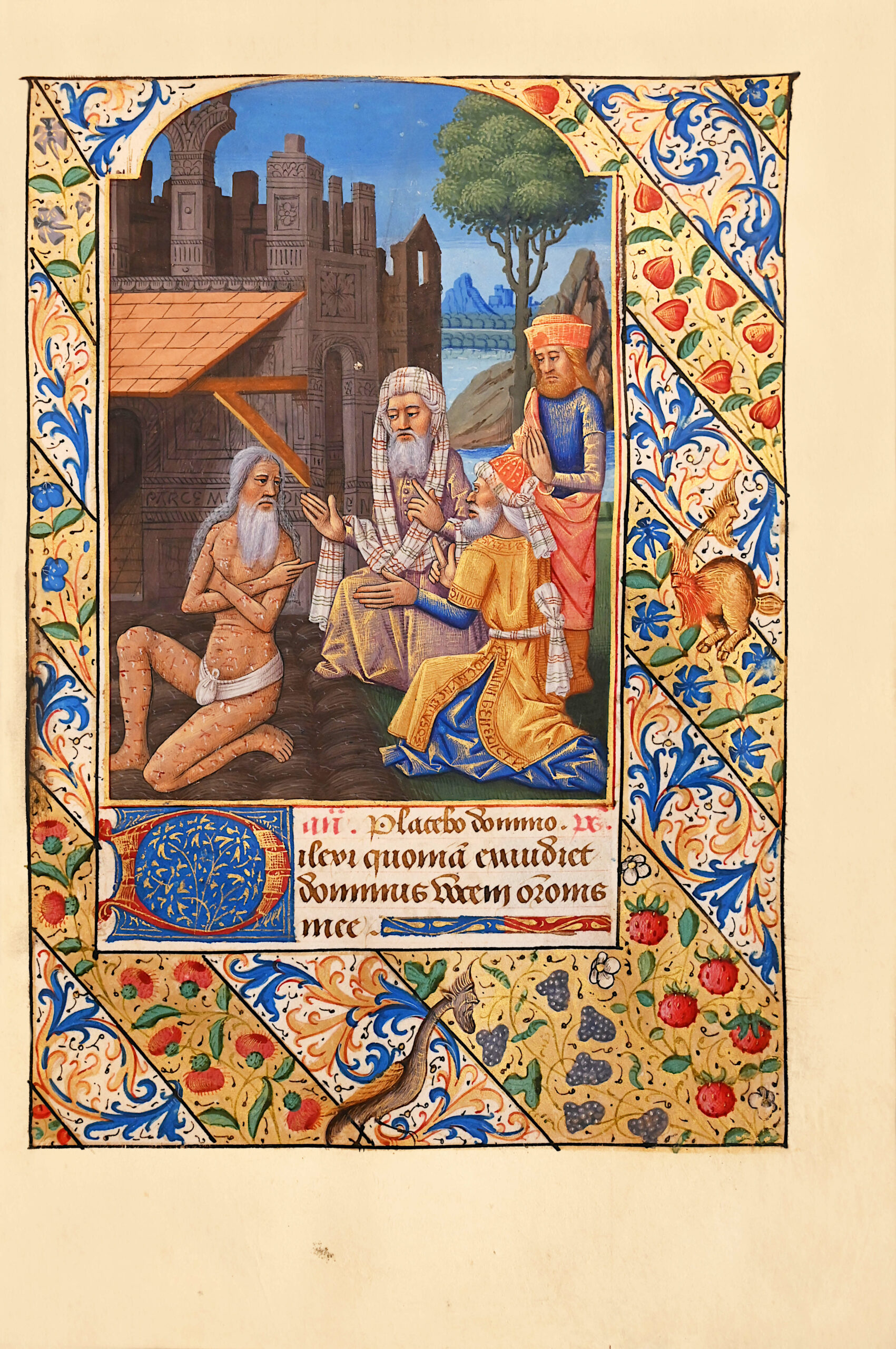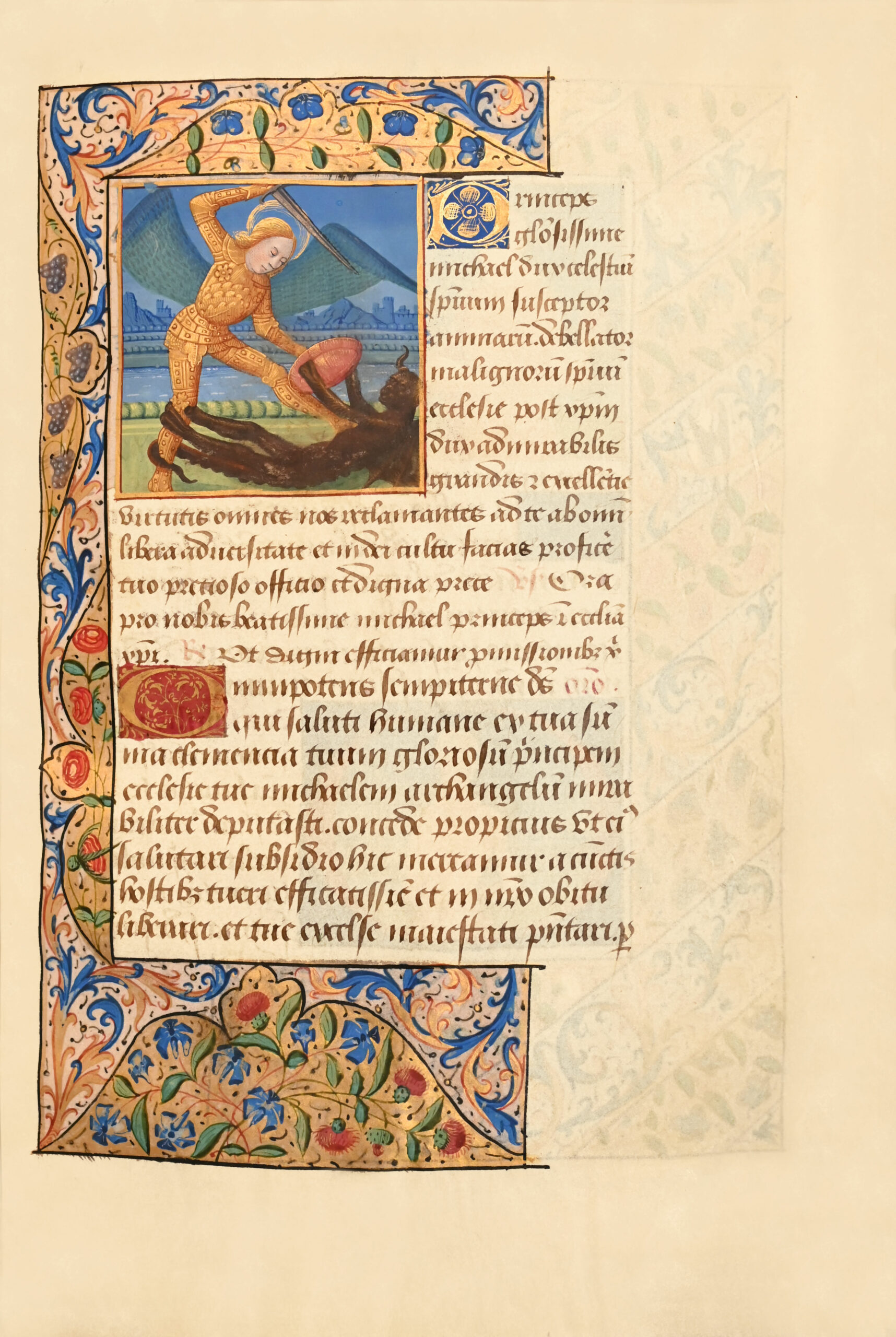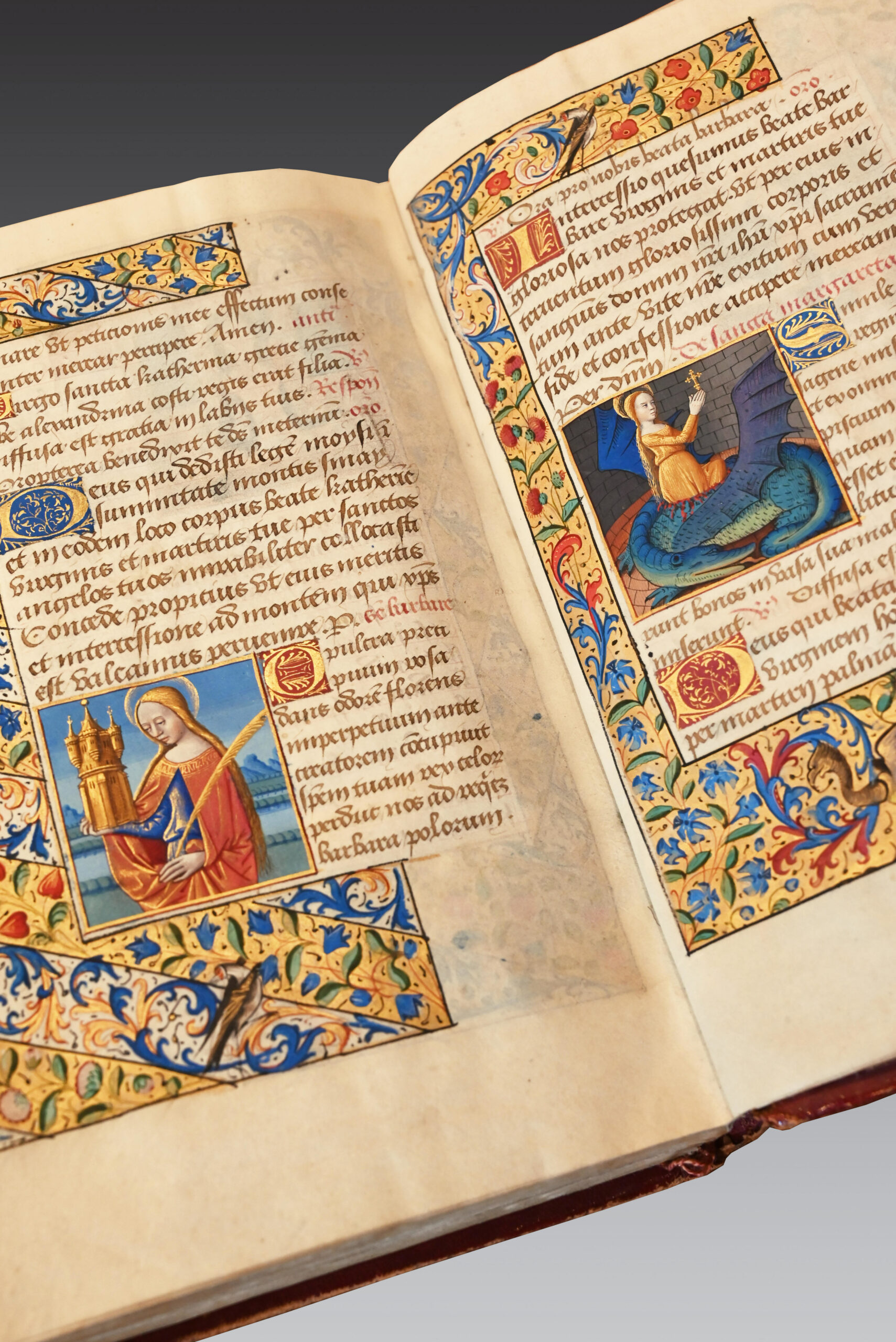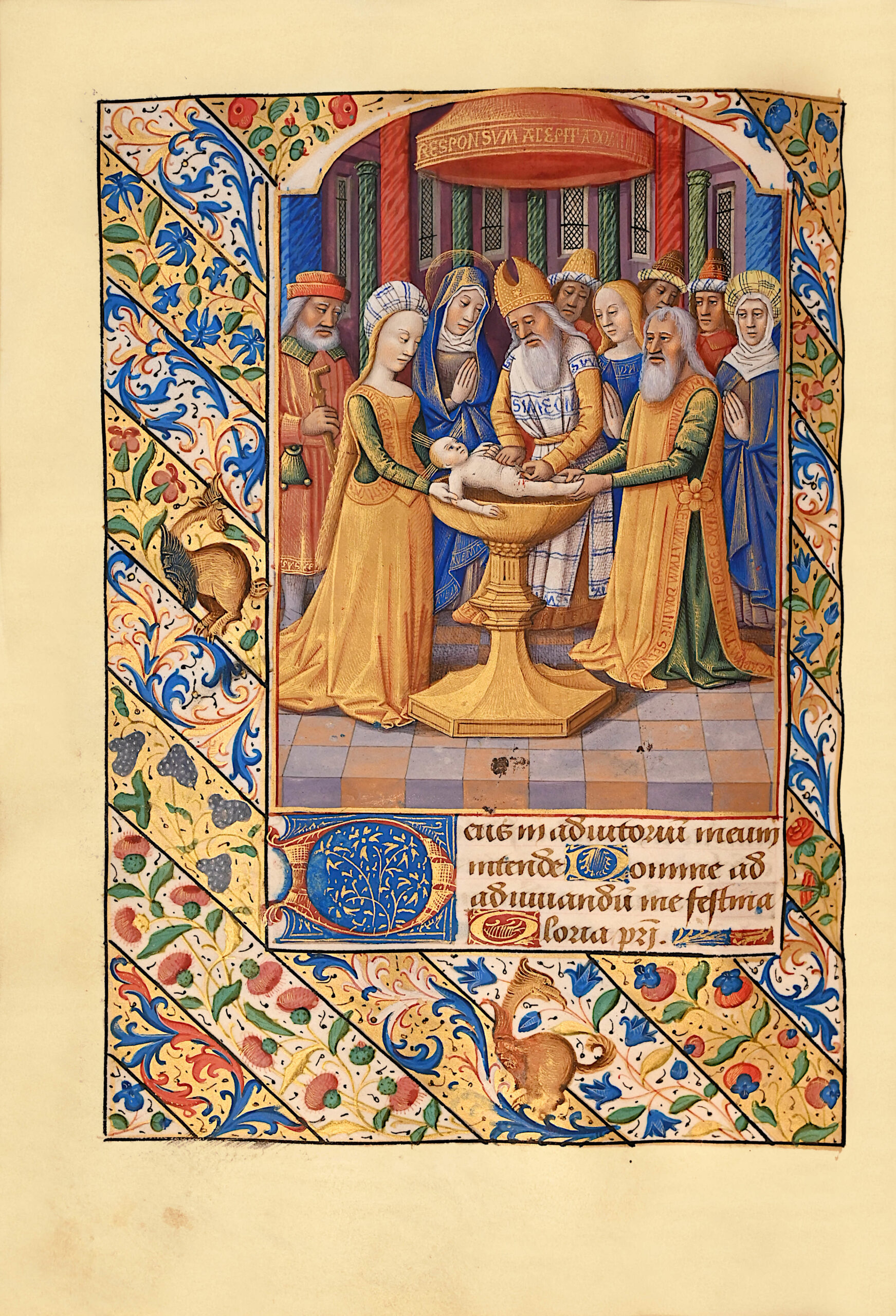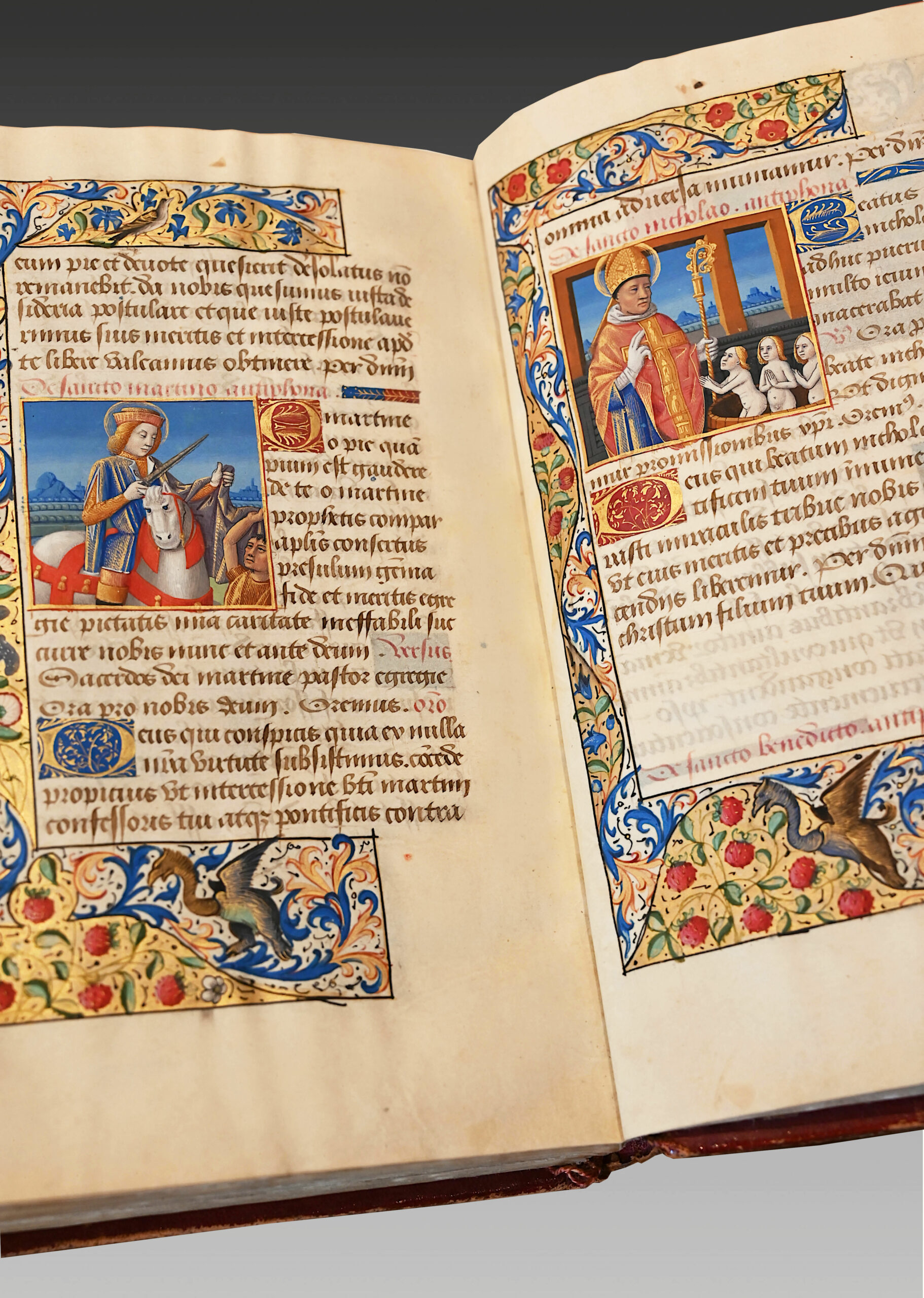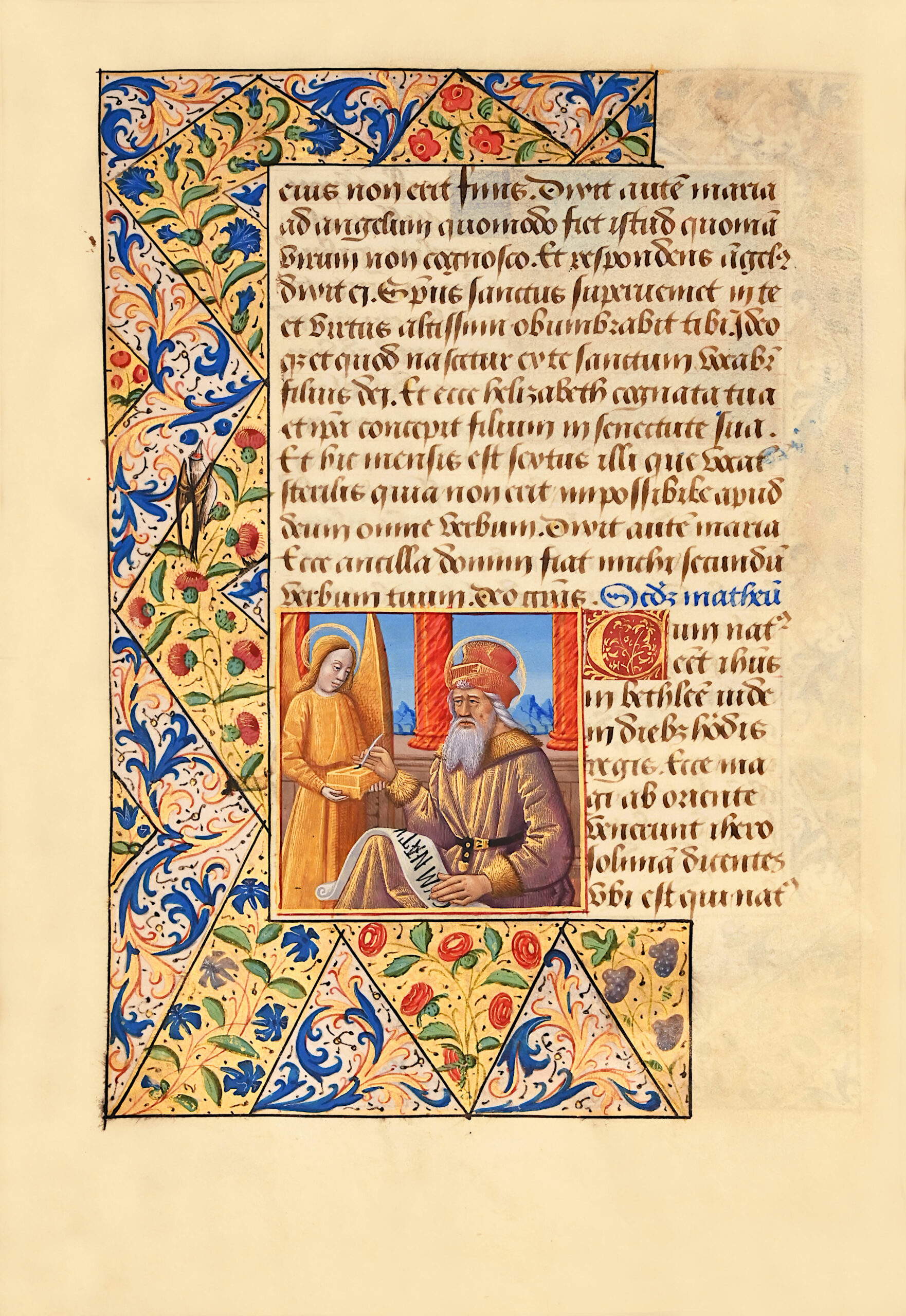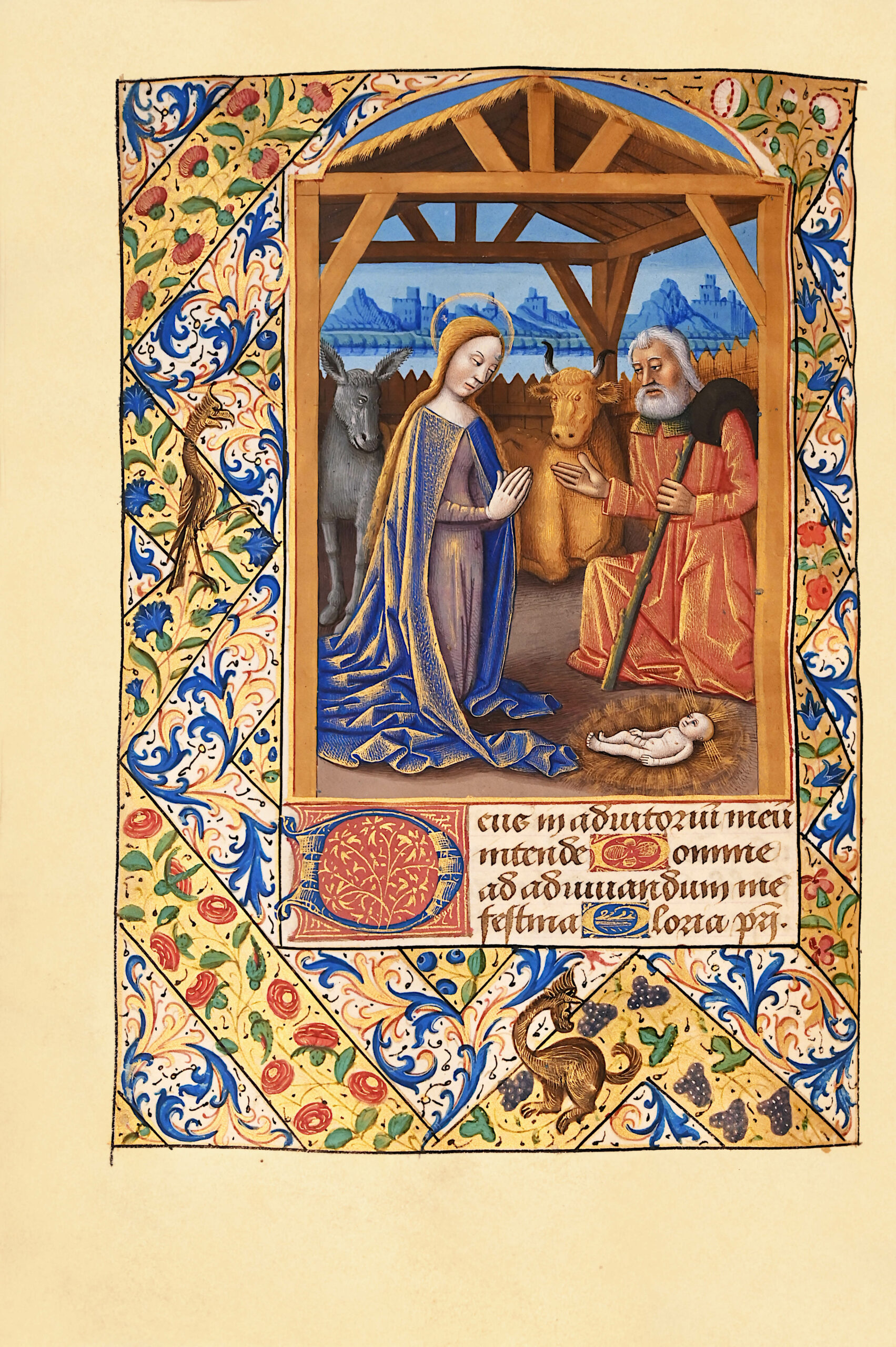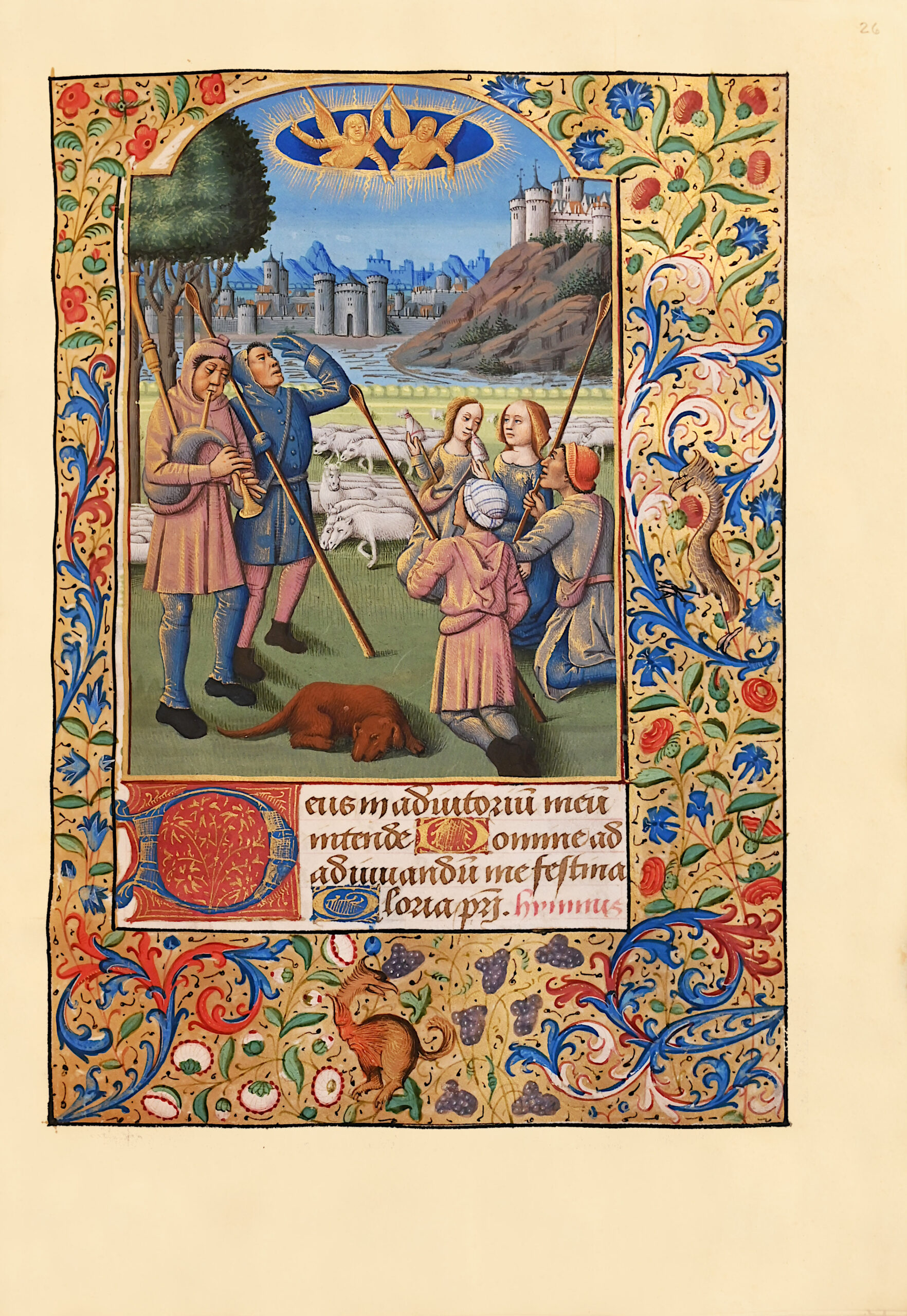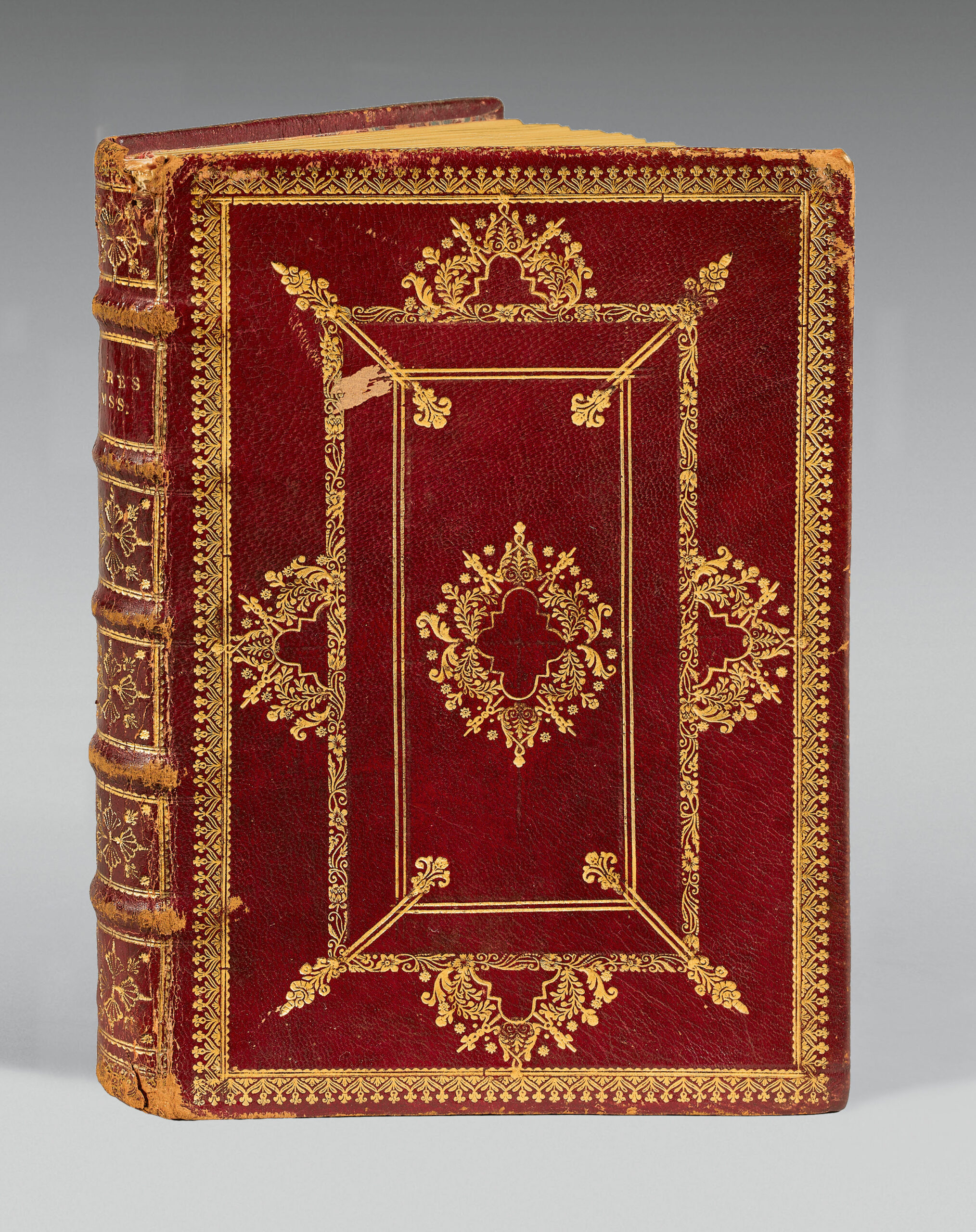France, Tours, towards 1485-90.
Illuminated manuscript on vellum, in Latin and French; 1 full-page miniature, 8 large miniatures and 21 small miniatures by the master of Jean Charpentier.
96 leaves the last blank, 5 blank leaves, missing single leaves after leaves 13 and 17, and 2 leaves after leaves 37 and 43, quires mainly of 8 leaves (except i-ii 6 , xiv 2); 22 long lines in carbon ink; red ink rules; foliation in pencil; cursiva formata ; calendar in red, blue and black, titles in red, endpapers and initials on one and two lines of delicate design in liquid gold on red-brown and blue motifs, 21 small miniatures with three-quarter illuminated borders, the miniatures are 7 to 10 lines long, mostly 8 lines, two of them are historiated initials (leaves 82 and 87v), the painted borders represent colored acanthus leaf motifs and partially colored flower and fruit motifs on a gold background, including dragons, birds, ornamental grotesque representations, hybrid creatures, etc. 9 very large or full-page miniatures with full borders framing the entire page with slightly arched compartments, all usually with a large initial and 4 lines of text below the miniature, the first containing the first words of the text painted in the lower frame, (in excellent condition with wide margins, a few small stains and small spots in the margins).
Large 8vo bound in English red morocco towards 1700, 5-ribbed spine with gilt compartments, title “hores. mss”, rich Duseuil-style decoration on the covers, three frames, two of which are decorated with borders, central four-lobed motif decorated with foliage, leaves and flowers, the same iron is affixed by half in the center of each side of the second frame, inner gilt border, marbled paper endpapers, small loss on the head of the spine, lower cover slightly split, nerves and cut rubbed, preserved in a probably English rosewood box dating from the late Victorian period, towards 1870-80, ivory, sycamore and fruitwood inlays imitating cathedral bindings, bordered with red velvet, clasp defective and case generally very fragile.
213 x 152 mm. (calendar: 125 x 80 mm).
A true picture book, in exceptional condition, this manuscript must be the tallest and probably the most accomplished of the hours painted by the Master of jean Charpentier, a close follower of the painter and illuminator Jean Fouquet from Touraine and a close collaborator of Jean Bourdichon.
For a relatively short manuscript, the book contains a large number of miniatures, 9 full-page and 21 vignettes accompanied with a rich secondary decoration.
It is in excellent condition and was created on commission probably for a woman named Catherine, whose name appears several times. Could it be Catherine Le Camus, the wife of Jean Charpentier, from whom the name of master to the artist comes?
Of undeniable technical perfection, the miniatures contained in the present hours of Catherine le Camus present a luminous palette and a brilliant use of liquid gold.
Text :
– ll. 1-6v: Calendar in Latin and French
– ll. 7r-10 : Evangelical pericopes.
– ll. 13-43v : Hours of the Virgin, for the use of Rome
– ll. 44: Hours of the Cross
– ll. 44v-46v: Hours of the Holy Spirit
– ll. 47-56v : Penitential psalms followed by litanies.
– ll. 57-80v : Office of the dead according to the usage of Rome
– ll. 82v-84v : Various prayers : ” Deus qui voluisti ” and ” Obsècre te “.
– ll. 87-95v : Suffrages.
Iconography:
The identification of the artist has taken place over several decades, an anonymous artist was first recognized by François Avril in a 1976 publication.
In 1982, John Plummer divided a corpus of manuscripts very similar in pictorial style between two illuminators whom he named the “Master of Morgan 96” and the “Master of Morgan 366″.
In 1993, Nicole Reynaud pointed out that the New York manuscripts were “too closely related in their modest ambition not to be from the same workshop, which it is more prudent to study as a single group“, the work of the workshop grouped around the “Master of Jean Charpentier“, an assumed name given to it from a book of hours executed for Jean Charpentier, notary and secretary to the French king Charles VIII.
Many of the books of hours produced were for use in Tours, but the workshop seems to have worked in a wider area that stretched from Anjou to Poitou, through the County of Marche and even Rouen. The style is characterized by a broad color palette with liquid golds, blue, green, red and purple; figures with proud postures, white skin, broad foreheads and sumptuous draperies (see the Annunciation). The compositions betray the influence of Jean Fouquet and
The technique is close to the Master of Adelaide of Savoy (active in Angers and Poitiers between 1450 and 1470).
– List of full-page miniatures:
– l.13r: Annunciation
– l.23v : Nativity
– l.26r : Announcement to the shepherds
– l.29r : Adoration of the Magi
– l.31v : Circumcision
– l.24r : Death of the Virgin
– l.44v: Pentecost
– 92r: David and Bathsheba
– l.47r : Job on his dung heap receiving his three friends.
Provenance: this manuscript was made for a woman called Catherine and quoted in the prayers on leaves 82 and 88v. St. Catherine is also the first saint to appear in the suffrages on leaves 93-93v. It would be fortunate to link this Catherine to Jean Charpentier’s wife, Catherine Le Camus. She could have received this book as a gift or ordered it after admiring her husband’s manuscript that our artist had produced.
Bibliography:
– Avril (François), « Manuscrits à peintures d’origine française à la Bibliothèque nationale de Vienne», Bulletin Monumental, 134 : IV (1976), p. 333-335 et fig. 2 et 3 (329-338).
– Plummer, The Last Flowering, French Painting in Manuscripts, 1420-1530, from American Collections, 1982, cat. 59-61, p. 44-46.
– Avril et Reynaud, Les manuscrits à peintures en France, 1440-1520. Quand la peinture était dans les livres, 1993, cat. 158-159, p. 288-290.
